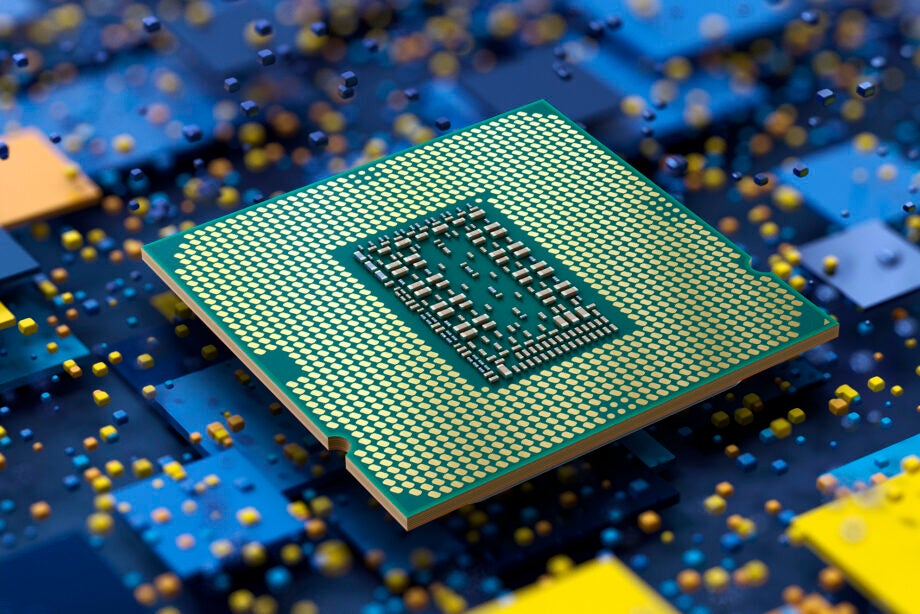From Mainframes to Mobile Devices
Have you ever wondered how your computer or smartphone performs complex tasks with lightning speed? The answer lies in the processor, the brain of your device. Processors, also known as central processing units (CPUs), are the most essential component of any computing system. In this article, we'll dive into the incredible world of processors, exploring their history, evolution, and how they work.
The Beginning of Processors
The first electronic computer, ENIAC, was built in 1945, and it used vacuum tubes as its primary processing component. Vacuum tubes were bulky, power-hungry, and generated a lot of heat, making them highly unreliable. Later, in 1956, IBM created the first-ever hardwired computer, the IBM 704. It used magnetic cores for storage and magnetic tape for input/output. This was a huge leap forward in computing technology, and the IBM 704 was the first computer to use transistors, which made it faster, smaller, and more reliable than the previous computers.
The Evolution of Processors
In 1971, Intel Corporation introduced the world's first microprocessor, the Intel 4004. It was a four-bit CPU with a clock speed of 108 KHz, and it was primarily used in calculators. However, it was a game-changer in the computing world, as it paved the way for the creation of the personal computer (PC).
The 1980s saw the birth of IBM PC, and the introduction of the first 16-bit processor, the Intel 8086. It had a clock speed of 5 MHz and was capable of addressing 1 MB of memory. It was followed by the 80286, which had a clock speed of 6 MHz and could address up to 16 MB of memory.
The 1990s saw a significant shift in the computing world with the introduction of the Pentium processor. The Pentium was the first processor to use superscalar architecture, which allowed it to execute multiple instructions at the same time. It had a clock speed of up to 233 MHz and was the first processor to support multimedia applications.
In the early 2000s, the first dual-core processors were introduced. Dual-core processors had two processing units on a single chip, which allowed them to execute multiple tasks simultaneously. This was followed by the introduction of quad-core processors, which had four processing units on a single chip.
The current generation of processors includes multi-core CPUs with clock speeds of up to 5 GHz, capable of executing billions of instructions per second. These processors use hyper-threading technology, which allows them to execute multiple threads simultaneously, and are optimized for multi-tasking and high-performance computing.
How Processors Work
Processors are the most critical component of any computing device. They are responsible for executing instructions and performing calculations. Processors are made up of millions of transistors that are organized into logic gates. These logic gates perform basic arithmetic and logical operations, such as addition, subtraction, multiplication, and division.
The processor receives instructions from the computer's memory and performs the necessary calculations. It then stores the results in the memory, where they can be accessed by the computer's software. The processor also includes a control unit, which manages the flow of instructions and data between the processor, memory, and other components of the computer.
The clock speed of a processor determines how quickly it can execute instructions. The clock speed is measured in hertz (Hz) and represents the number of cycles per second. The higher the clock speed, the faster the processor can execute instructions.
The number of cores in a processor determines how many tasks it can perform simultaneously. Each core operates independently, allowing the processor to execute multiple tasks simultaneously, which improves overall performance. Hyper-threading technology further enhances this capability by allowing each core to execute multiple threads simultaneously, effectively increasing the number of cores.
Another important factor in processor performance is cache memory. Cache memory is a small amount of high-speed memory that is integrated into the processor. It stores frequently used data and instructions, allowing the processor to access them quickly without having to retrieve them from the slower system memory.
Types of Processors
There are different types of processors for different computing needs. The most common types of processors are:
01.Desktop Processors: These are designed for use in desktop computers and are optimized for high performance and multi-tasking.
02.Laptop Processors: These are designed for use in laptops and other mobile devices. They are optimized for low power consumption and improved battery life.
03.Server Processors: These are designed for use in servers and are optimized for high performance, reliability, and scalability.
04.Embedded Processors: These are designed for use in embedded systems, such as industrial control systems and medical devices.
05.Mobile Processors: These are designed for use in mobile devices, such as smartphones and tablets. They are optimized for low power consumption and improved battery life.
The Future of Processors
The future of processors is exciting, as there are many emerging technologies that are set to revolutionize computing. One of these technologies is quantum computing, which uses the principles of quantum mechanics to perform calculations. Quantum computers have the potential to solve complex problems that are impossible for classical computers to solve, such as breaking encryption codes.
Another emerging technology is neuromorphic computing, which is inspired by the human brain's neural networks. Neuromorphic processors are designed to perform tasks that are difficult for traditional processors, such as image and speech recognition.
Labels: Interesting, science, Technology


0 Comments:
Post a Comment
Subscribe to Post Comments [Atom]
<< Home